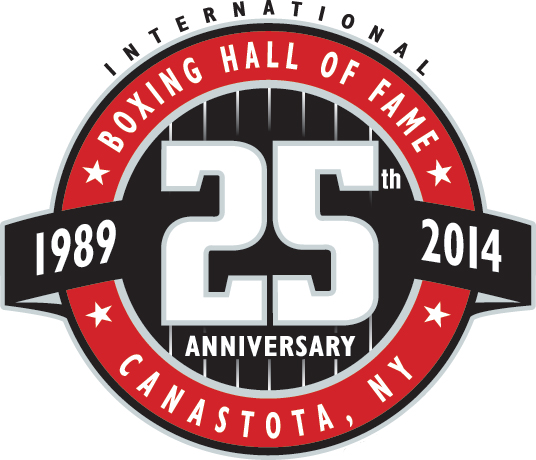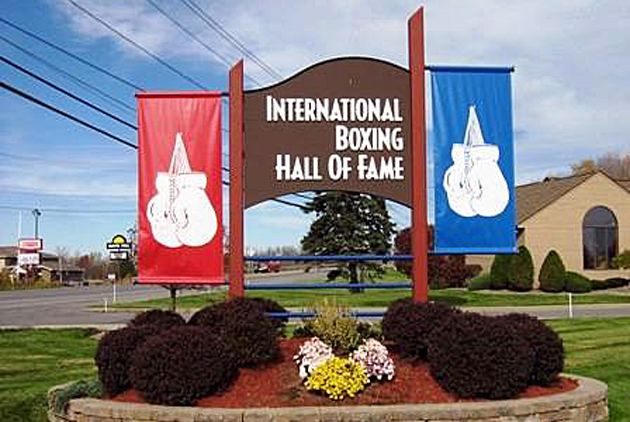International Boxing Hall of Fame enacts balloting process changes


For the first time since 2001 the International Boxing Hall of Fame has amended its balloting process – and it wouldn’t be an understatement to say the changes are forward-looking.
Unlike the earlier nip-and-tuck that carved out the Observers category for writers, publishers, historians, artists, photographers and screenwriters from its Non-Participant roots, this year’s reforms are nothing short of seismic. Executive Director Ed Brophy believes the changes will create a more contemporary ballot and a more up-to-date voting process.
Before delving into the intricacies behind the changes, here’s an overview of what has transpired:
* The Pioneer category no longer will be voted on annually, but rather every five years to coincide with the Hall’s anniversary years. Therefore, the next Pioneer won’t be enshrined until June 2019 when the IBHOF marks its 30th induction weekend. In line with past policy, only the top vote-getter will earn enshrinement.
* The Modern category’s starting year was moved from 1943 to 1989 – a Beamon-esque 45-year leap. Fighters on the previous Modern ballot whose final bout occurred in 1988 or earlier were removed to make room for boxers that probably wouldn’t have made the ballot nearly as quickly as they would have under the old system. Also, the pool of nominees was reduced from 45 to 30 – but includes 20 first-timers, the most since the Hall’s inaugural year. Finally, because of the shorter list of nominees, voters are permitted to choose a maximum of five fighters instead of the previous limit of 10. Like past years, the top three vote-getters will be inducted.
* The biggest changes were reserved for the Old Timers category. To accommodate the mass migration of names previously listed on the Modern Ballot, the cut-off date for the Old-Timers was extended from 1942 to 1988. With nearly 80 names comprising vastly divergent eras now in the mix, the Hall decided to split the Old Timers into two distinct groups: The “Early Era” that constitutes the original 1893-1942 Old Timers ballot span, and the new “Late Era” that will list fighters whose careers ended between 1943 and 1988. The two ballots will alternate from year to year, with the 40 “Late Era” fighters getting the first crack before the voters, who can choose as many as five. Like the Pioneers, only the top vote-getter will be elected.
A note: As of now, 1991 inductee Jimmy McLarnin, 84 at the time, was the only Old Timer honoree to accept his rewards on stage. This new environment may well increase that roll call.
“This shift does three things primarily,” Brophy said. “One, it allows us to stay within the previously established time gaps (50 years for the original Old Timers ballot, 45 years for the ‘Late Era’ ballot and 26 for the new Modern Ballot, whose gap will grow with each passing year). Two, it allows the Modern category to be more contemporary and to allow more boxers who have already been retired five full years to be considered. And three, it allows us to keep the number of names on each ballot at a reasonable size. The changes are a tweaking, an adjustment of years, but the overall structure remains the same. I believe all this complements the process in a very nice way.”
If Brophy’s reasons for the changes can be boiled down to one sentiment it would be this: The passage of time created the right stage to make the changes.
“It’s been 25 years since the first induction class – it was felt that the ending year for the Old Timers class could be moved up,” he said. “As the years have passed it has become more evident that the changing of the years for the Old Timers and the Moderns would be a healthy adjustment to the system and to the overall election process. The year 1989 was chosen as the first year of the Modern era because it was first year that all the major sanctioning bodies shifted to 12-round championship fights.”
As has been the case in previous years, Modern enshrinees will be voted on by a floating pool of approximately 175 electors consisting of full members of the Boxing Writers Association of America as well as historians from Japan, England, Canada, Italy, South Africa, Germany, Mexico, Puerto Rico and the U.S.
The expanded list of Old Timers presented several options to Brophy but in the end a split, alternating ballot proved to be the most viable choice.
“With the combination of names that were already on the Old Timers ballot and the new names moving over from the Moderns, the alternating yearly ballot made the most sense,” he said. “If we placed everyone on the same ballot, we’d have a boxer from the early 1900s competing with a boxer who last fought in the 1970s and 1980s. With the alternating ballot, it still allows the boxers to be elected in the Old Timer category but when the votes are cast they are voting on fighters who fought in the same era, which is a complement to the system.”
Although these reforms came to light in rather explosive fashion, the process that led to it was extremely deliberative.
“This adjustment of years has been talked about on a serious level for the past three years,” Brophy said. “With the 25th anniversary celebration concluding, it was felt that this would be the appropriate time to adjust the criteria, which, in the end, we felt was a natural fit. We felt very comfortable and very confident that this was the ideal time to make such adjustments. The previous voting process had worked well from 1990 until now and we feel the adjustments to the process will maintain that same level of credibility and fairness.”
While Brophy anticipates this new lineup to be in place for a number of years he’s open to the possibility of more changes in the future, such as the eventual phase-out of the Pioneers or the addition of female and amateur boxers to the category roster.
“The Pioneer category could eventually be concluded over time, but at this given time we anticipate the once-every-five-years election is appropriate and will continue for years to come,” he said. “(As for females and amateur categories) there are no changes to be made now, but all Hall of Fame criteria over the course of time always allows for consideration of amendments that would improve the process. We always welcome the opportunity to receive input and try as best we can to honor and preserve boxing’s history in the most appropriate way.”
The balloting process will end Oct. 31 and the announcement of the Class of 2015 will occur during the first week of December. The induction ceremony is scheduled for 2:30 p.m. June 14 on the Hall of Fame grounds in Canastota, N.Y.
*
Lee Groves is a boxing writer and historian based in Friendly, W.Va. He is a full member of the BWAA, from which he has won 12 writing awards, including nine in the last four years and two first-place awards since 2011. He has been an elector for the International Boxing Hall of Fame since 2001 and is also a writer, researcher and punch-counter for CompuBox, Inc. He is the author of “Tales From the Vault: A Celebration of 100 Boxing Closet Classics. To order, please visit Amazon.com or e-mail the author at [email protected] to arrange for autographed copies.















